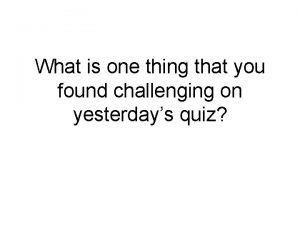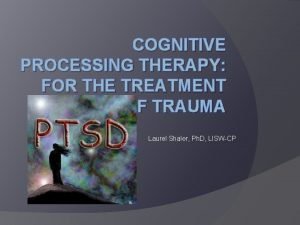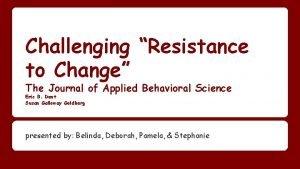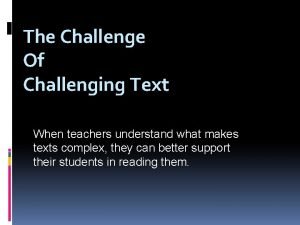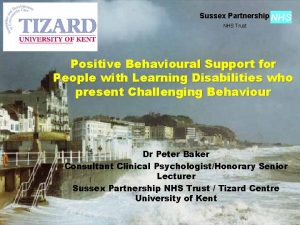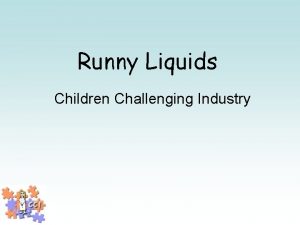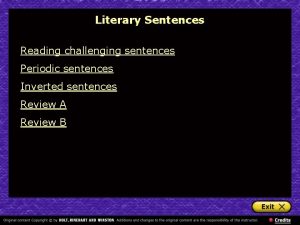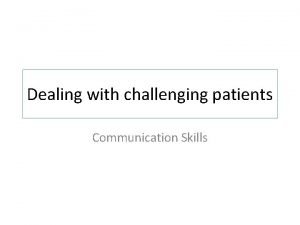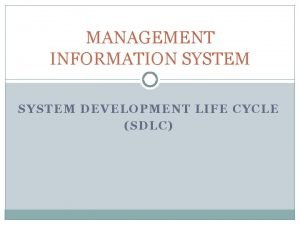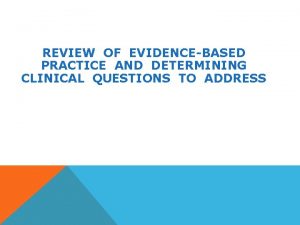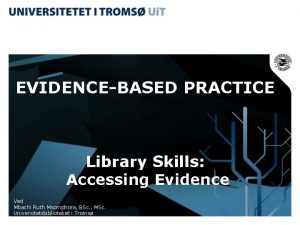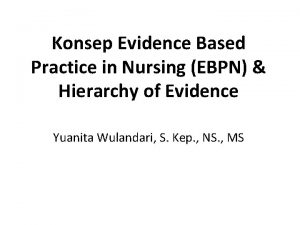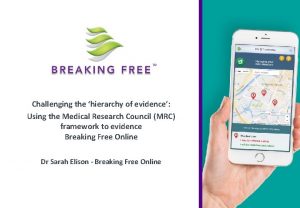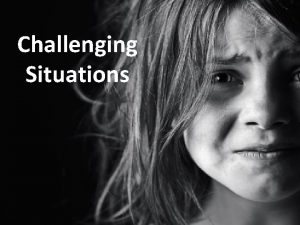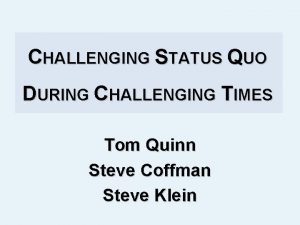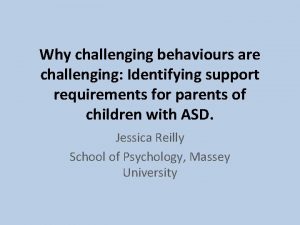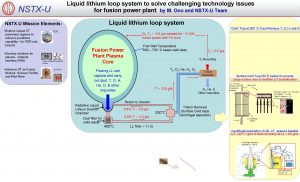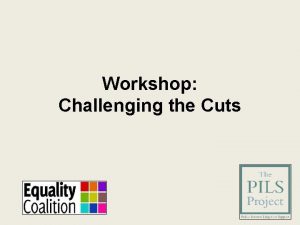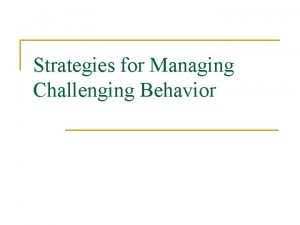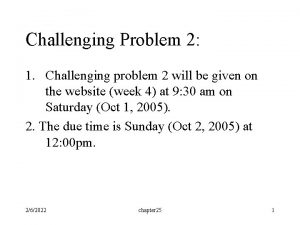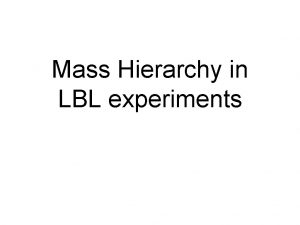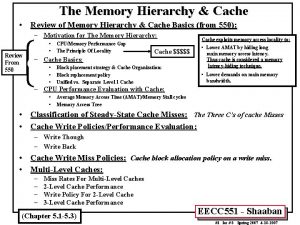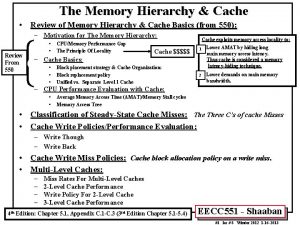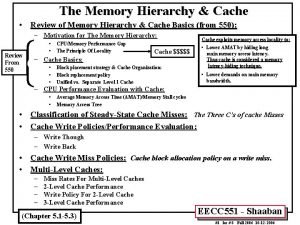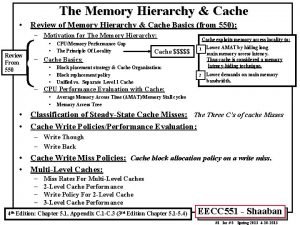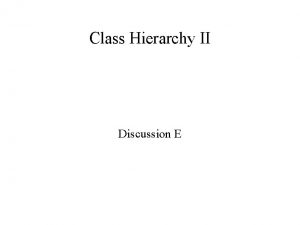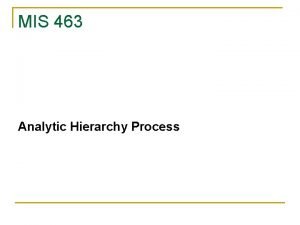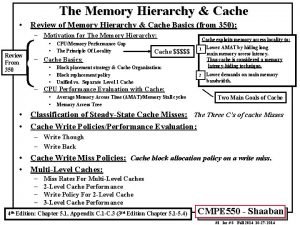Challenging the hierarchy of evidence Using the Medical

























- Slides: 25

Challenging the ‘hierarchy of evidence’: Using the Medical Research Council (MRC) framework to evidence Breaking Free Online Dr Sarah Elison - Breaking Free Online

Content Introduction Digital treatment for substance misuse: Breaking Free Online (BFO) Methods The Medical Research Council (MRC) framework © 2016 Breaking Free Group. All rights reserved. Findings Key findings from BFO research programme Conclusions And implications www. Breaking. Free. Online. com

Introduction: Technology and treatment • Computer-assisted therapy (CAT) widens access to evidence-based treatment • Based primarily on cognitive-behavioural therapy (CBT) principles • • Reduces waiting times Overcome stigma Improves treatment fidelity Also cost-effective • Can be used as CAT or self-help for range of mental health-related conditions • Literature demonstrates approach clinically effective © 2016 Breaking Free Group. All rights reserved. www. Breaking. Free. Online. com

Introduction: Breaking Free Online • Psychological treatment programme for substance misuse • Accessible 24/7 across all devices via a secure cloud-based web application • Integrates CBT, mindfulness, relapse prevention and motivational enhancement therapy • Delivers personalised treatment with consistency and fidelity • Research programme underway demonstrating clinical effectiveness and implementation © 2016 Breaking Free Group. All rights reserved. www. Breaking. Free. Online. com

Methods: MRC framework • Effectiveness evaluated via mixed-method research programme • Based on Medical Research Council (MRC) guidelines • For complex multi-component interventions • Implementation and change mechanisms as important as outcomes • Encourages continual process of research and development • Multiple methodologies, i. e. both qualitative and quantitative approaches • Results in data spanning the ‘hierarchy of evidence’ © 2016 Breaking Free Group. All rights reserved. www. Breaking. Free. Online. com

Methods: MRC framework Medical Research Council 2008 © 2016 Breaking Free Group. All rights reserved. www. mrc. ac. uk/complexinterventionsguidance www. Breaking. Free. Online. com

Methods: Hierarchy of evidence Decreasing ‘value’ amongst medical model focussed scientific community, however MRC Framework describes the importance of ‘lower level’ evidence in the design of complex interventions and achievement of ‘gold standard’ evidence (RCTs, meta-analyses) Systematic Reviews Randomised Controlled Trials value Pilot Outcome Evaluations Qualitative Interviews/ Focus Groups Case Studies © 2016 Breaking Free Group. All rights reserved. www. Breaking. Free. Online. com

Findings: Findings from BFO research programme Development: Conceptualising clinical content using BCT taxonomy Feasibility/piloting: Real-world outcomes from an e. Therapy service Implementation: Qualitative exploration of barriers and facilitators Spectrum of methods and evidence within MRC framework © 2016 Breaking Free Group. All rights reserved. Evaluation: Understanding mechanisms of action of clinical content www. Breaking. Free. Online. com

Findings: Findings from BFO research programme Development: Conceptualising clinical content using BCT taxonomy Feasibility/piloting: Real-world outcomes from an e. Therapy service Implementation: Qualitative exploration of barriers and facilitators Spectrum of methods and evidence within MRC framework © 2016 Breaking Free Group. All rights reserved. Evaluation: Understanding mechanisms of action of clinical content www. Breaking. Free. Online. com

Implementation: Qualitative exploration • Introducing a novel digital innovation into existing healthcare system can be seen as ‘disruptive’ • This may affect adoption and uptake of the innovation. • Qualitative studies to explore barriers and facilitators of this process at Change, Grow, Live (n = 61) • Behavioural science theory used to conceptualise findings: • Diffusion of innovations theory • Normalisation process theory • Transtheoretical model © 2016 Breaking Free Group. All rights reserved. www. Breaking. Free. Online. com

Implementation: Qualitative exploration • Initial difficulties with IT infrastructure and trepidation about digital format initially acted as barriers to diffusion • Eventually staff and services users started to see benefits, e. g. caseload management, 24/7 access outside of normal service opening hours • Diffusion achieved via a nationwide licence, some barriers to normalisation of BFO as standard treatment offering, e. g. preferences for traditional interventions • But as innovative ways of delivering BFO were devised staff and service users began to find a ‘place’ for BFO amongst other treatments available • Peer mentor delivery was found to be a particularly effective means of delivery, as it provided recovery community with ‘ownership’ of BFO • And peer mentors reported that by supporting service users to use BFO and practice strategies in it, this helped their own recovery maintenance © 2016 Breaking Free Group. All rights reserved. www. Breaking. Free. Online. com

Findings: Findings from BFO research programme Development: Conceptualising clinical content using BCT taxonomy Feasibility/piloting: Real-world outcomes from an e. Therapy service Implementation: Qualitative exploration of barriers and facilitators Spectrum of methods and evidence within MRC framework © 2016 Breaking Free Group. All rights reserved. Evaluation: Understanding mechanisms of action of clinical content www. Breaking. Free. Online. com

Findings: Findings from BFO research programme Development: Conceptualising clinical content using BCT taxonomy Feasibility/piloting: Real-world outcomes from an e. Therapy service Implementation: Qualitative exploration of barriers and facilitators Spectrum of methods and evidence within MRC framework © 2016 Breaking Free Group. All rights reserved. Evaluation: Understanding mechanisms of action of clinical content www. Breaking. Free. Online. com

Development: Conceptualising clinical content • Field of health psychology has made significant progress in advancing and standardising the science of behaviour change • Major part of this is development of the Behaviour Change Technique Taxonomy v 1 (BCTTv 1) (Michie et al. , 2013) • Provides a means of describing the active components contained within complex interventions • However, the BCTTv 1 has not been widely used to describe content of interventions for substance misuse • So, this study used the clinical content of BFO to demonstrate how the BCTTv 1 could be used to conceptualise the content of a substance misuse intervention © 2016 Breaking Free Group. All rights reserved. www. Breaking. Free. Online. com

Development: Conceptualising clinical content • Total of 26 / 93 BCTs identified in BFO • At least one BCT identified in 12 / 16 BCT grouping categories in the BCTTv 1 Alcohol misuse £ 3. 5 billion • Specific BCT categories included: • Goal setting and planning • Psychoeducation • Repetition and substitution • Reward • Regulation Table from: Dugdale et al. (2016) Substance Abuse Treatment, Prevention and Policy © 2016 Breaking Free Group. All rights reserved. www. Breaking. Free. Online. com

Findings: Findings from BFO research programme Development: Conceptualising clinical content using BCT taxonomy Feasibility/piloting: Real-world outcomes from an e. Therapy service Implementation: Qualitative exploration of barriers and facilitators Spectrum of methods and evidence within MRC framework © 2016 Breaking Free Group. All rights reserved. Evaluation: Understanding mechanisms of action of clinical content www. Breaking. Free. Online. com

Findings: Findings from BFO research programme Development: Conceptualising clinical content using BCT taxonomy Feasibility/piloting: Real-world outcomes from an e. Therapy service Implementation: Qualitative exploration of barriers and facilitators Spectrum of methods and evidence within MRC framework © 2016 Breaking Free Group. All rights reserved. Evaluation: Understanding mechanisms of action of clinical content www. Breaking. Free. Online. com

Feasibility: Outcomes from e. Therapy service • Research demonstrated CAT for substance misuse effective, though much of these data from research settings, not real-world services • Therefore, clinical outcomes examined from a dedicated e. Therapy Increasing Access to Psychological Therapies (IAPT) mental health service ‘Self-Help Services’ • Quantitative study with 1068 service users triaged into one of three CAT programmes: • Breaking Free Online (BFO) • Sleepio (insomnia) • Living Life to the Full (LLtt. F - low mood and stress) • Aims: examine outcomes for the three groups, and determine if CAT has potential as a treatment modality for range of mental health related conditions © 2016 Breaking Free Group. All rights reserved. www. Breaking. Free. Online. com

Feasibility: Outcomes from e. Therapy service • Outcomes measured using IAPT Minimum data Set: • Patient Health Questionnaire-9; General Anxiety Disorder scale-7; Work and Social Adjustment Scale • At baseline, BFO users significantly higher scores for depression and anxiety than Sleepio and LLtt. F users • Significant within group changes in scores from baseline to post-treatment • Within each group, percentages of service users reaching clinical threshold scores for depression and anxiety significantly reduced over the treatment period • No significant differences between groups in degree of change in scores • Findings demonstrate that CAT modality has potential as additional treatment offering in IAPT service, implications for case-load management © 2016 Breaking Free Group. All rights reserved. www. Breaking. Free. Online. com

Findings: Findings from BFO research programme Development: Conceptualising clinical content using BCT taxonomy Feasibility/piloting: Real-world outcomes from an e. Therapy service Implementation: Qualitative exploration of barriers and facilitators Spectrum of methods and evidence within MRC framework © 2016 Breaking Free Group. All rights reserved. Evaluation: Understanding mechanisms of action of clinical content www. Breaking. Free. Online. com

Findings: Findings from BFO research programme Development: Conceptualising clinical content using BCT taxonomy Feasibility/piloting: Real-world outcomes from an e. Therapy service Implementation: Qualitative exploration of barriers and facilitators Spectrum of methods and evidence within MRC framework © 2016 Breaking Free Group. All rights reserved. Evaluation: Understanding mechanisms of action of clinical content www. Breaking. Free. Online. com

Evaluation: Mechanisms of action • BFO clinical content structured via six-domain biopsychosocial model, the Lifestyle Balance Model (LBM) • • Also, corresponding psychometric assessment, Recovery Progression Measure (RPM) Measures changes in functioning in six domains in LBM • Data from RPM at baseline populates LBM to provide tailoring advice to users, shows domains of most significant impairment (traffic lights) • Directs users to clinical techniques that will be of most benefit to them • But, do users follow tailoring advice and more frequently complete techniques corresponding to their most impaired domains of functioning? • Also, does completion of specific clinical techniques result in specific clinical outcomes (mechanisms of action of BFO)? © 2016 Breaking Free Group. All rights reserved. www. Breaking. Free. Online. com

Evaluation: Mechanisms of action • Data from 2311 BFO users analysed to examine association between tailoring advice, clinical techniques completion, and clinical outcomes • Outcomes showed that users did follow tailoring advice • Frequency of completion of clinical techniques significantly associated with level of impairment (red, amber, green) in individual LBM domains • Mechanism of action analyses revealed primacy of techniques in BFO related to cognitive restructuring (located on ‘negative thoughts’ LBM domain) • Surprising finding, but makes sense theoretically • BFO is a cognitive-behavioural programme • Cognitive behavioural theory demonstrates cognitions underpin behaviours • And therefore, cognitive change underpins behavioural change © 2016 Breaking Free Group. All rights reserved. www. Breaking. Free. Online. com

Conclusions and implications • MRC framework demonstrates that establishing clinical effectiveness of complex interventions just one aspect of development and evaluation process • Examining implementation and outcomes in real-world treatment settings important in facilitating translation into standard practice • Especially important in relation to ‘disruptive’ digital interventions • Also, understanding how clinical content of complex interventions exert their effects, important in guiding continual updated and refinements • Particularly important for digital interventions which may be continually updated in order to keep pace with evolving digital technologies • Though RCTs and other clinical trial methodologies are important in evaluating complex interventions, other complementary approaches can be used © 2016 Breaking Free Group. All rights reserved. www. Breaking. Free. Online. com

Contact details Dr Sarah Elison Research Director Email: selison@breakingfreegroup. com Office: 0161 834 4647 Mobile: 07814 048483 Websites: www. breakingfreegroup. com www. breakingfreeonline. com © 2016 Breaking Free Group. All rights reserved. www. Breaking. Free. Online. com
 What i found challenging
What i found challenging Cognitive processing therapy worksheets
Cognitive processing therapy worksheets Challenging resistance to change
Challenging resistance to change Challenging behaviour scenarios
Challenging behaviour scenarios Examples of challenge
Examples of challenge Exciting, boring, dangerous, safe, interesting, challenging
Exciting, boring, dangerous, safe, interesting, challenging Time intensity model challenging behaviour
Time intensity model challenging behaviour Children challenging industry
Children challenging industry Periodic table sentences
Periodic table sentences Define the eight stages of the sdlc
Define the eight stages of the sdlc Dealing with challenging patients
Dealing with challenging patients Sdlc feasibility study
Sdlc feasibility study Melnyk hierarchy of evidence
Melnyk hierarchy of evidence Evidence hierarchy pyramid
Evidence hierarchy pyramid Melnyk & fineout-overholt levels of evidence hierarchy
Melnyk & fineout-overholt levels of evidence hierarchy Primary evidence vs secondary evidence
Primary evidence vs secondary evidence Primary evidence vs secondary evidence
Primary evidence vs secondary evidence Secondary sources
Secondary sources Primary evidence vs secondary evidence
Primary evidence vs secondary evidence Jobs vancouver
Jobs vancouver Are fibers class evidence
Are fibers class evidence Class evidence vs individual evidence
Class evidence vs individual evidence Difference between class evidence and individual evidence
Difference between class evidence and individual evidence Individual vs class evidence
Individual vs class evidence The ecological fallacy
The ecological fallacy Conduct money
Conduct money
